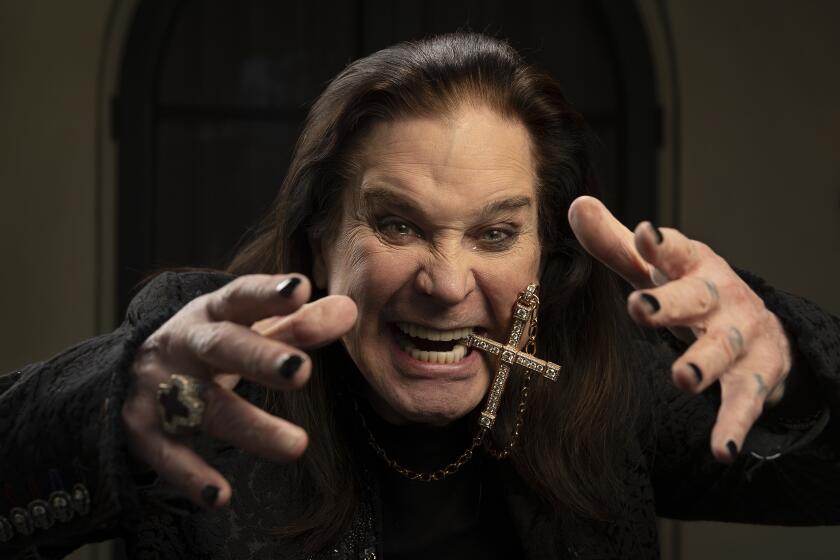Friendship and All That Jazz
- Share via
They go back, those who are left, more than 40 years to a time when blacks integrating the all-white musicians union realized that something was missing.
It was 1953 and that something missing was the camaraderie they shared as members of the all-black Local 767 Rhythm Club on Central Avenue, the main thoroughfare of West Coast jazz at the time. Many felt that bond, that identity, was lost when they moved to their new Hollywood home at Local 47.
“When the unions merged, everyone, all the black musicians, seemed to scatter,” said Jimmie Clark, an 84-year-old former bass player and singer who performed with Duke Ellington. “We realized that we needed a way for everyone to keep in touch.”
Many of the old-timers managed to satisfy that need by forming the Los Angeles Clef Club, an organization of musicians who went on to sponsor an annual jazz festival.
The concert’s 34th edition Sunday drew more than 1,500 people to the Montebello Golf and Country Club, where 20 bands delivered a musical array that stretched from the blues to ballroom dancing. Proceeds from the ticket sales ($15 each) go to provide scholarships for young musicians and to help indigent musicians, said Clark, the group’s president.
Music filled four rooms Sunday. At one point, the banjo-picking of Danny Davis and His Roaring ‘20s Band had listeners’ feet tapping while, in another room, Clyde Dunn and His Elegant Four wooed an audience with harmonica blues. Elsewhere, people danced to the big band sound of Bernie Farr’s 17-piece group and, in a fourth room, the audience enjoyed the Ray Charles’ classic “I Got a Woman” performed by Hugh Bell’s combo.
The annual concert is special both for its longevity and its origins, said drummer Gene Washington, who was honored at this year’s festival. “It wasn’t put together by Hollywood. It’s not put together by the record companies,” he said. “It’s put together by the people around the corner and down the block.”
The club has changed over the years. Once a refuge for African American male musicians, it now includes people of many different backgrounds who are united in their love of jazz. But old age and deaths have reduced the number of members from a peak of more than 100 to about 40.
“Many of our members are no longer with us,” said Clyde Dunn, 66, the group’s vice president, who plays saxophone in the Elegant Four. “We need to bring new members in, or the organization will go out of existence.”
In addition to raising money for scholarships, club president Clark said, some members give lessons to children who otherwise would not be exposed to music.
Members bear the history of music in the 1940s and ‘50s when African American artists flocked to Los Angeles for music jobs in movie studios, radio and early television.
Because they were originally prohibited from joining the all-white union, they formed their own with a union hall on Central Avenue, where they rehearsed and held jam sessions that lasted late into the night. The next day they often played at the studios or with the touring bands of Cab Calloway, Count Basie and Louis Armstrong.
Hearing Armstrong play was all Karen Hernandez, a 58-year-old jazz pianist, needed as a child to become hooked on being a musician. She moved to Los Angeles from Salt Lake City in the late ‘60s and began playing at local clubs.
Marl Young, 80, a pianist and former musical director for the Lucille Ball television series “Here’s Lucy,” recalls the tension that surrounded the unions’ merger.
“There was resistance on both sides,” said Young, who chaired the black local at the time. “Whites weren’t happy, and some black musicians, especially from the South, didn’t want to have anything to do with whites.”
Despite early apprehensions, the merger in general went smoothly. Young became one of the merged local’s first black executive board members. And it was his suggestion that the Clef Club formally open its doors to women and nonblacks.
Music has changed too, he said.
“We played from the soul,” he said. “Today, musicians play from the book. They are better musicians, but as far as their soul, that is another question.”
More to Read
The biggest entertainment stories
Get our big stories about Hollywood, film, television, music, arts, culture and more right in your inbox as soon as they publish.
You may occasionally receive promotional content from the Los Angeles Times.










